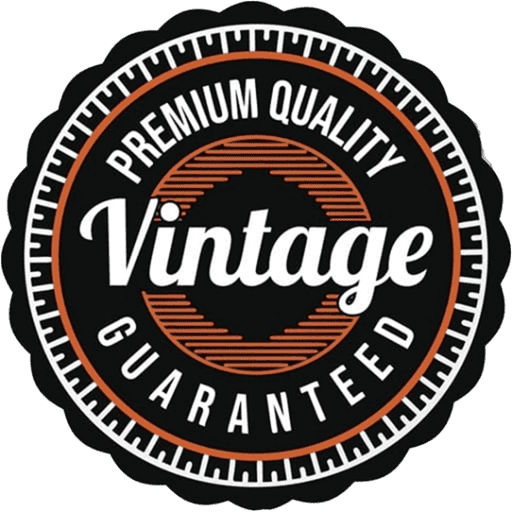When evaluating whether the 1980s qualify as a truly vintage era, consider how cultural, technological, and fashion developments from that decade have left a lasting impact. Recognizing the 1980s as vintage involves understanding the distinct characteristics that set it apart from other periods, including bold design trends, innovative music genres, and influential cinematic styles that continue to influence contemporary aesthetics.
Historical evidence reveals that items from the 1980s are increasingly categorized as vintage, with auction houses, collector communities, and fashion industry experts recognizing the decade’s unique style signatures. The surge in interest around retro technology, such as early personal computers and gaming consoles, further supports this classification, illustrating how innovations from that period are now appreciated as nostalgic symbols.
From a broader perspective, the social and political shifts of the 1980s–marked by the rise of consumerism and global culture–contribute to its status as a significant historical period. These transformations, coupled with design movements like Memphis furniture and neon fashion, cement the decade’s position within the vintage narrative. Appreciating the 1980s as a vintage era involves tracing how these diverse elements continue to shape modern trends and cultural conversations.
Is the 1980s Considered Vintage from a Cultural and Fashion Perspective
The 1980s firmly earn their place as a vintage era due to its distinct fashion trends and cultural milestones. Bright neon colors, oversized silhouettes, and bold patterns defined everyday style, making clothing from this decade instantly recognizable. Iconic accessories like shoulder pads, scrunchies, and big earrings signaled a desire for expressive, statement-making looks.
Fashion icons such as Madonna, Michael Jackson, and Princess Diana popularized styles that continue influencing designers today. High-waisted jeans, leg warmers, and power suits became symbols of confidence and individuality. Street style from this time captures a sense of rebellious creativity, encouraging modern enthusiasts to experiment boldly with clothing choices.
Culturally, the 1980s saw the emergence of MTV, shaping music and youth culture substantially. The decade’s films, like “Back to the Future” and “The Breakfast Club,” reinforced themes of innovation and self-expression. These elements fostered a nostalgic revival, prompting collectors and fashion enthusiasts to seek out vintage pieces that echo this vibrant era.
Modern vintage markets often highlight authentic 1980s items, emphasizing the importance of quality and originality. Wearing authentic styles from the 1980s not only celebrates a distinctive aesthetic but also marks the decade as a pivotal time for cultural transformation. As a result, many consider the 1980s a definitive vintage period that continues to inspire fashion and cultural narratives today.
How 1980s Fashion Trends Are Viewed as Vintage Today and Their Influence on Modern Style
Many contemporary fashion designers draw inspiration from 1980s styles, integrating bold materials like neon colors, oversized silhouettes, and shoulder pads into their collections. Purchasing vintage-inspired apparel or authentic 1980s pieces offers a striking way to stand out while celebrating this era’s unique aesthetic.
Key 1980s Trends That Resonate Now
Power suits with broad shoulders have reappeared on runways, emphasizing confidence and structure. High-waisted jeans, often with exaggerated proportions, remain popular for their flattering fit and nostalgic appeal. Additionally, accessories like scrunchies, statement earrings, and chunky sneakers serve as modern nods to 1980s maximalism.
How These Trends Shape Modern Fashion
Streetwear brands infuse vintage elements by blending oversized T-shirts with bold prints reminiscent of 1980s album covers. The rise of fashion collaborations between contemporary labels and vintage stores encourages consumers to explore styles from that decade. Incorporating 1980s silhouettes and details into everyday outfits supports a sense of individuality and retro-chic confidence.
The Role of Music and Pop Culture in Shaping the 1980s as a Vintage Era
Music and pop culture served as the driving forces behind the distinctive identity of the 1980s, cementing its status as a vintage period. Iconic artists like Michael Jackson, Madonna, and Prince created sounds that defined the decade, influencing fashion, dance, and social attitudes. Playing their albums and videos today demonstrates how their innovative styles still inspire contemporary trends.
Music as a Cultural Catalyst
- Genres such as new wave, synth-pop, and heavy metal emerged, shaping the decade’s energetic atmosphere.
- Music videos became a primary means of expression, with MTV debuting in 1981, revolutionizing how audiences engaged with artists.
- Hit singles topped charts longer than ever before, reflecting a growing synergy between music and visual presentation.
Pop Culture Icons and Their Influence
- Fashion trends from the 1980s, like shoulder pads, neon colors, and haircut styles, drew inspiration directly from celebrity appearances and music videos.
- Films, television shows, and video games captured the decade’s spirit, solidifying its unique aesthetic.
- Street culture and rebellious attitudes popularized by artists fueled youth movements and countercultural expressions, making 1980s aesthetics enduringly recognizable.
By paying attention to these cultural elements, one can understand why the 1980s remains a vivid vintage era. Its musical milestones and pop icons continue to influence digital media, fashion, and entertainment, keeping the decade relevant and celebrated in modern society.
